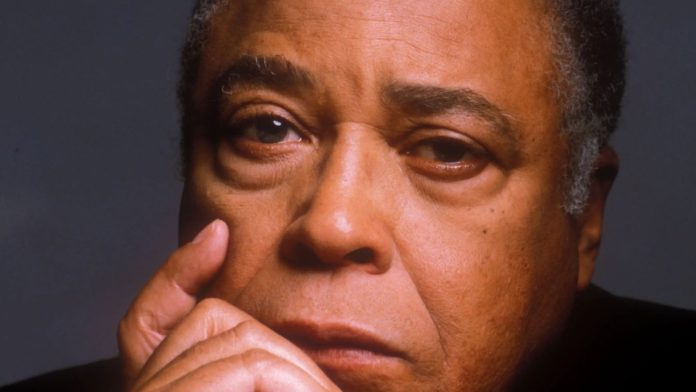Reimagining Hollywood: The Controversial Rise of AI-Generated Actors
As the film industry continues to evolve, the intersection of technology and artistry is casting a bold shadow over the cinematic landscape. With beloved actors making a digital comeback, the debate intensifies: what does it mean to bring back legends through artificial intelligence? This fascinating journey explores how AI is not just a tool, but a game-changer for Hollywood, allowing stars to keep “acting” even after they’ve passed.
The AI Transformation of James Earl Jones’ Iconic Voice
One of the most notable figures whose legacy will carry on is James Earl Jones, the legendary voice of Darth Vader. Recently, it was disclosed that he signed an agreement with Disney to allow the use of his distinct voice even after his death. This deal marks a pioneering moment in the realm of AI-generated voices, whereby his unique tones can be utilized in future "Star Wars" productions. It’s a melding of technology and artistry that has fans buzzing with excitement and concern alike.
The Digital Resurrection of Hollywood Legends
But Jones isn’t alone in this new digital frontier. The use of AI in recreating actors opens a Pandora’s box of ethical questions. Stars like James Dean, Carrie Fisher, and Oliver Reed have all had their likenesses brought back through the wonders of technology. As Hollywood explores this digital dimension, it’s reminiscent of a sci-fi narrative where heroes never truly fade away. However, this “bringing back to life” isn’t without its controversies.
The Ethics of AI and Digital Cloning in Movies
When “Rogue One: A Star Wars Story” hit theaters, it brought the likeness of Peter Cushing back to life as Grand Moff Tarkin. This achievement was celebrated as a technological marvel, but it also galvanized a legal battle. Cushing’s estate accused Disney of using his image without permission, igniting debates over the boundaries of digital resurrection. As technology marches forward, the need for clear regulations surrounding the posthumous use of an actor’s likeness is more urgent than ever.
Hollywood’s Ongoing Battle with Digital Ethics
The conversation about AI in Hollywood reached a boiling point during a four-month strike by the SAG-AFTRA actors’ union. Actors laid down their tools, demanding safeguards against the potential exploitation of their likenesses posthumously. As a part of new regulations being introduced, production companies will now need consent from the relatives of deceased actors before utilizing their images. This shift is a significant step in recognizing the rights of performers even after their passing.
Reviving Fame: James Dean’s Return in "Back To Eden"
Consider James Dean—a figure who has not had a film role in decades. His impact in just three movies has made him a cultural icon. Thanks to AI, he is set to star in a new sci-fi film, "Back To Eden," giving him a second chance at cinematic stardom. This resurrection raises questions: should classic actors be allowed to be resurrected digitally? What will this mean for future generations of talent?
Paul Walker: A Touching Tribute in "Fast & Furious 7"
Paul Walker’s untimely death during the filming of “Fast & Furious 7” was a tremendous loss to the franchise. His character, Brian O’Conner, was such an integral part of the storyline that filmmakers decided to use CGI and Walker’s brothers to complete his remaining scenes. The inclusion of his likeness prompted a heartfelt farewell rather than a mere technological gimmick. Walker’s family supported this move, showcasing a boundary where digital replication serves as a tribute rather than mere exploitation.
The Mixed Reception of AI in "Alien: Romulus"
On the contrary, the latest installment in the Alien franchise, “Alien: Romulus,” faced backlash for its digital resurrection of Sir Ian Holm’s character, Ash. Critics claimed that the digital representation felt more like a caricature than a genuine portrayal, pointing out that the line between homage and mockery is razor-thin. The backlash highlights the importance of creating technology that honors the original performances rather than diminishing them.
Hollywood Legends and AI: A New Normal?
Stars like Carrie Fisher have navigated the challenging waters of digital resurrection. Fisher’s posthumous appearance in “Star Wars: The Rise of Skywalker” required meticulous work to blend existing footage and voice recordings, proving that there’s artistry even in resurrection. But what price does this come at? What happens to the legacy of stars when they’re reconstituted via pixels and codes?
The Future of AI in Movies: A Double-Edged Sword
As we sit at the intersection of nostalgia and innovation, the burgeoning influence of AI in Hollywood presents both wonder and wariness. It raises critical questions about the nature of creativity, legacy, and consent. Will this trend lead to a dystopian film industry where real human talent is overshadowed by AI-projected images of long-gone stars? Or will it enrich our cinematic experiences, allowing us to celebrate the icons we cherish?
In conclusion, while the rebirth of Hollywood legends through AI is awe-inspiring, it also carries profound implications. As we navigate this digital evolution, it’s essential to highlight the responsibilities that come with wielding such power. Balancing respect for the deceased, the desires of their families, and the essence of their artistry will shape how we remember our stars—forever illuminated by the glow of the silver screen.

